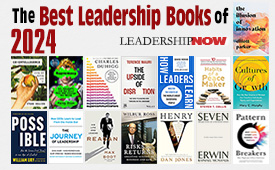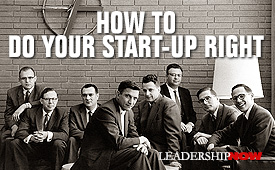 |
 |
02.14.25

SOFTEN-ing Improves Your Zen but Does NOT Diminish Your Authority
THINK back to the last difficult conversation you had. What happened? Maybe you lashed out, got defensive, dodged or overexplained; possibly you lied, got passive-aggressive, or completely shut down, unable to talk. Whatever the reaction, I want you to know that it’s normal. In high-stress interactions, our walls go up, and our armor comes on and we’re ready to protect ourselves in any way we can. Most of the time in difficult interactions, we turn cold. Our bodies tense up, and we’re on the defensive. We start saying things that are hurtful and unhelpful and likely have to repair the situation with multiple conversations to get the issue resolved. This toughness that we exude during hard interactions has a tendency to keep us rigid and unable to move the conversation forward in a productive way. Think about what might happen if you did the opposite. If you were able to relax in these high-stakes and stressful moments — what would change? Those in leadership are often scared of losing their edge. They don’t want to be too soft or too Zen because they’re nervous to be more human in a work setting. It’s more professional to be at odds, cold, serious, standoffish, untouchable, inaccessible. Since being human isn’t necessarily what got them to where they are in their careers, to begin with, they aren’t sure if the act of softening is for them. I would raise an eyebrow if some people didn’t think this was a bit outside the box; however, at the end of the day, what’s most important is for the work to get done, the bottom line to be met, and everyone to go home feeling fulfilled and of service, and if that’s the experience people want, then learning how to soften in the moments we want to be hard is the way to go. Below, I’ll share four reasons why softening within a difficult interaction is crucial as an authority figure. Adaptability Think about difficult conversations like you would martial arts. If someone is attacking you and your whole body is stiff, hard, the attacker can simply push you, and you’ll fall down, break easily. But if instead you drop your weight and soften the body, you become fluid, able to move, adapt, pivot, and navigate the situation with grace and confidence. Employees want to see those in leadership positions show calm under pressure, where moments of crisis or stress are met with more openness and creativity; where they can show different ways of handling and solving a problem - showing that there’s another way forward, even when others can’t see it. To be able to access this trait within a hard conversation means we must soften within it—let our guard down—so we can think clearly and talk wisely. Loyalty and Trust Think of the scenarios that come up daily where you react too quickly to fix the problem, forgetting about the people or group who brought the issue to you. Or maybe there have been instances where you have felt tension on your team and said you were open to hearing what was needed, but the moment it was shared, you went straight to defending and justifying your actions. When we find a way to relax within the interaction, we’re able to be more compassionate during heated interactions. We get to meet those expressing themselves where they’re at first, and then help to solve the issue second. Opening ourselves up to listen and acknowledge the other person or group during a stressful moment, helps those coming to you feel that they can trust you. Once trust is established and a bond is formed, loyalty is close behind. Creativity and Productivity In our lives, we go off instinct, and one of the most popular ways to manage others off instinct is to micro-manage. Where we’re constantly checking in on our teams, having meetings, 1:1s to make sure everyone is doing their job and on track. This constant monitoring is a result of mistrust of those around us. Our fear is what is driving the behavior and the interactions. When we start to calm our nervous system and move ourselves out of fear and into more rest within interactions, we start choosing different behaviors and words. We come from a more abundant mindset instead of scarcity and are then able to trust those around us more and give them permission to thrive in their positions on their own—for them to show us what they can do. Letting go of the reins and finding the calm within our interactions helps give those we work with space to create and thrive. Humanness Right now, the world is swept up by advances in technology. We’re connected all day long, emailing at all hours, even on weekends. In the working world, being is not what’s important. Doing is. All this doing is leading more and more employees to burnout and creating a toxic company culture. What softening does is bring back the idea of humanness. It reminds us to think of others in hard moments, to see if we can be helpful and supportive, even when it’s challenging to do. To see what a person or group of people needs, acknowledge it, and respond accordingly. So much of business is focused on outcomes and numbers that we forget it’s actual people who are doing the work. Softening helps us connect with each other, even when it’s hard to do. When I first start working with clients, their eyebrows raise when I share with them this idea of softening. There’s a lot of discomfort around the word itself. Won’t others walk all over me, take advantage, or think I’m not fit for the position I’m in? And what I say is this: Softening helps you connect with those you work with; it’s what allows you to be heard, understood, and human in the moments when your people need you to be. Softening is what gives you the opportunity to think clearly and live into the quote often attributed to Albert Einstein, “You cannot solve a problem with the same mind that created it.” In heated moments, it’s turning the body and mind from ice (hard and impenetrable) to water (soft and fluid). Where can you start to soften in your interactions today?  
Posted by Michael McKinney at 11:59 AM
|
BUILD YOUR KNOWLEDGE
 

How to Do Your Start-Up Right STRAIGHT TALK FOR START-UPS 
Grow Your Leadership Skills NEW AND UPCOMING LEADERSHIP BOOKS 
Leadership Minute BITE-SIZE CONCEPTS YOU CAN CHEW ON 
Classic Leadership Books BOOKS TO READ BEFORE YOU LEAD |